This Easy One-Pot Mac and Cheese recipe is extra creamy with great taste and tender macaroni—a perfect stovetop mac and cheese from pantry ingredients.
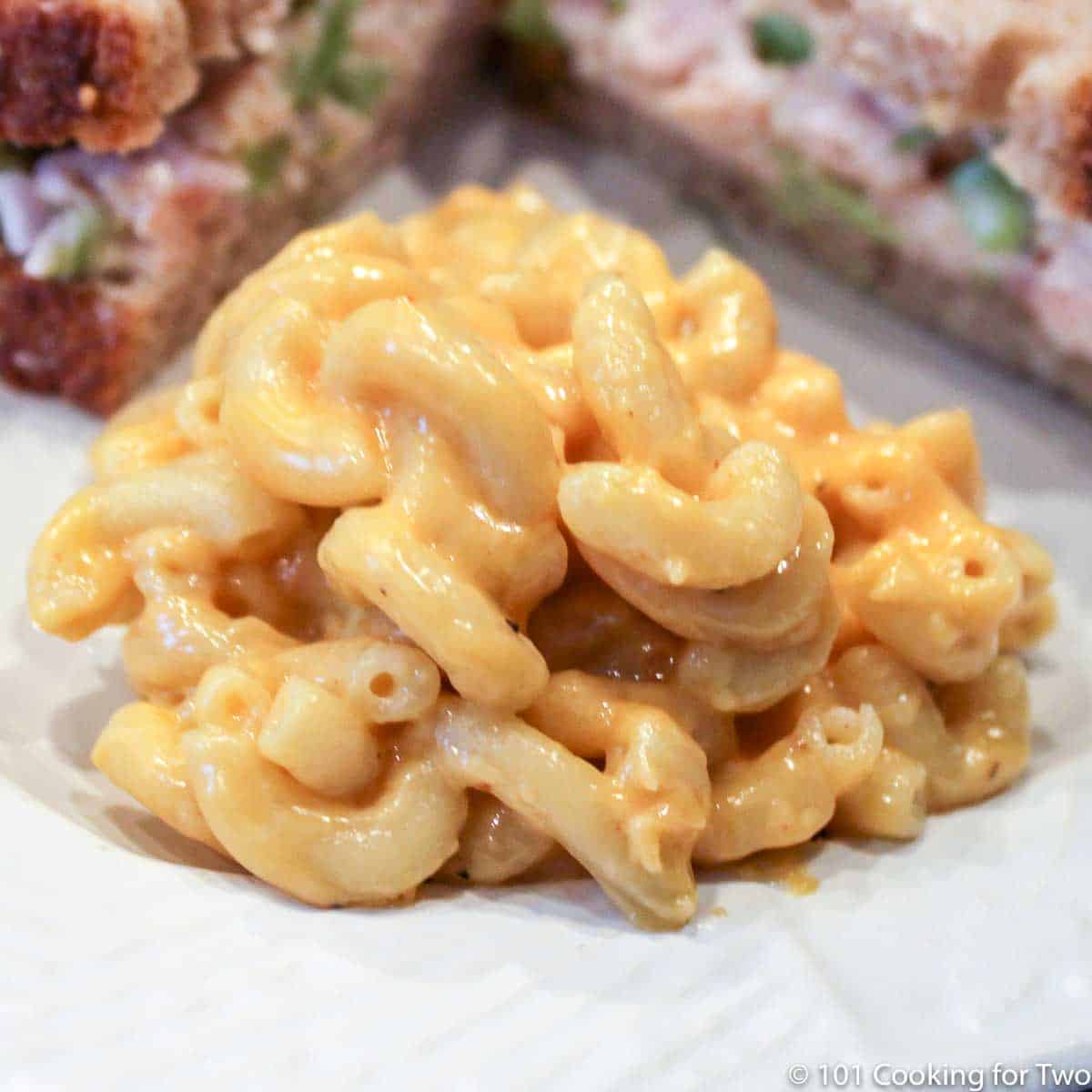
TABLE OF CONTENTS

You can easily do better than that blue box with powdered cheese—you and your family deserve better. Everybody, especially kids, love mac and cheese, whether it is the main part of the meal or just a tasty side dish.
This recipe uses milk with spices to cook the pasta. When done, mix in cheese for creamy goodness. The hands-on time is not much different when you precook the pasta for other recipes.
Just follow these simple step-by-step photo instructions. The cheese maintains extraordinary creaminess by not cooking it and just adding it to melt at the end of cooking. Let's kick it up a few notches using fresh cheese and spices.
Kids will love the Mac & Cheese with tenders, like Grilled Chicken Tenders, Baked Chicken Tenders, or Stovetop Chicken Tenders. Or with dummies like Grilled Chicken Drumsticks and Oven Baked Chicken Drumsticks.
And check out some other easy recipes like Roadhouse Mac and Cheese, Mac and Cheese with Egg, Crock Pot Macaroni and Cheese, and Chili Mac and Cheese.
I had seen this technique/recipe around several places, but the inspiration goes to Stephanie at Plain Chicken with her One Pot Mac and Cheese.
🧀Ingredients
- Elbow macaroni—other small pasta will work
- Milk
- Butter
- Shredded cheese—usually mild cheddar
- Pantry Ingredients—garlic powder, paprika, dry mustard, salt, black pepper
👨🍳How to Make One-Pot Mac and Cheese
- Combine milk, butter, spices, and macaroni in a medium nonstick saucepan.
- Bring to a boil, then reduce heat to a moderate simmer stirring frequently.
- The milk will absorb and cook away in about 15-20 minutes.
- Test the pasta for tenderness; if not done, add more milk and continue to simmer until tender.
- When the pasta is tender, and the milk is mostly absorbed, add shredded cheese, stir, and serve.
✔️Tips and Options
- TIPS
- Almost any dry pasta should work except ones that are very quick to cook.
- The cooking time can vary due to pasta variations and your definition of simmer.
- OPTIONS
- You can use other cheeses. Some good choices are Monterrey jack, gruyere, gouda, Velveeta™, or sharp cheddar cheese.
- Add meats like shredded pulled pork, beef, or chicken. Also, cubed ham or crumbled bacon adds great taste.
- Add some Panko breadcrumbs or make a full Parmesan Breadcrumb topping and brown under the broiler.
↕️How to make this a "for two" or "family size" recipe
This is a very easy recipe to cut in half or double. The full recipe makes about 4 servings. Perfect for our "for two" household as a main dish or as four side dish servings.
- Use the recipe card and adjust the number of servings from 4 to the number desired.
- Use the amount of ingredients in the ingredient list, not the instructions—those do not adjust.
- Cook for the same amount of time.
❓FAQs
Sometimes yes, but mostly no. If the dish is hot with a sauce, there is no reason to rinse; the starch in the boiling water will help the sauces adhere. But for cold dishes, rinse the pasta before cooking.
Store sealed in an airtight container. Refrigerate for 3-4 days or freeze for 4 months.
To reheat, thaw first overnight in the refrigerator if frozen—reheat covered in the oven or the microwave.

This recipe is listed in these categories. See them for more similar recipes.
Have you tried this recipe, or have a question? Join the community discussion in the comments.
Step-by-Step Photo Instructions
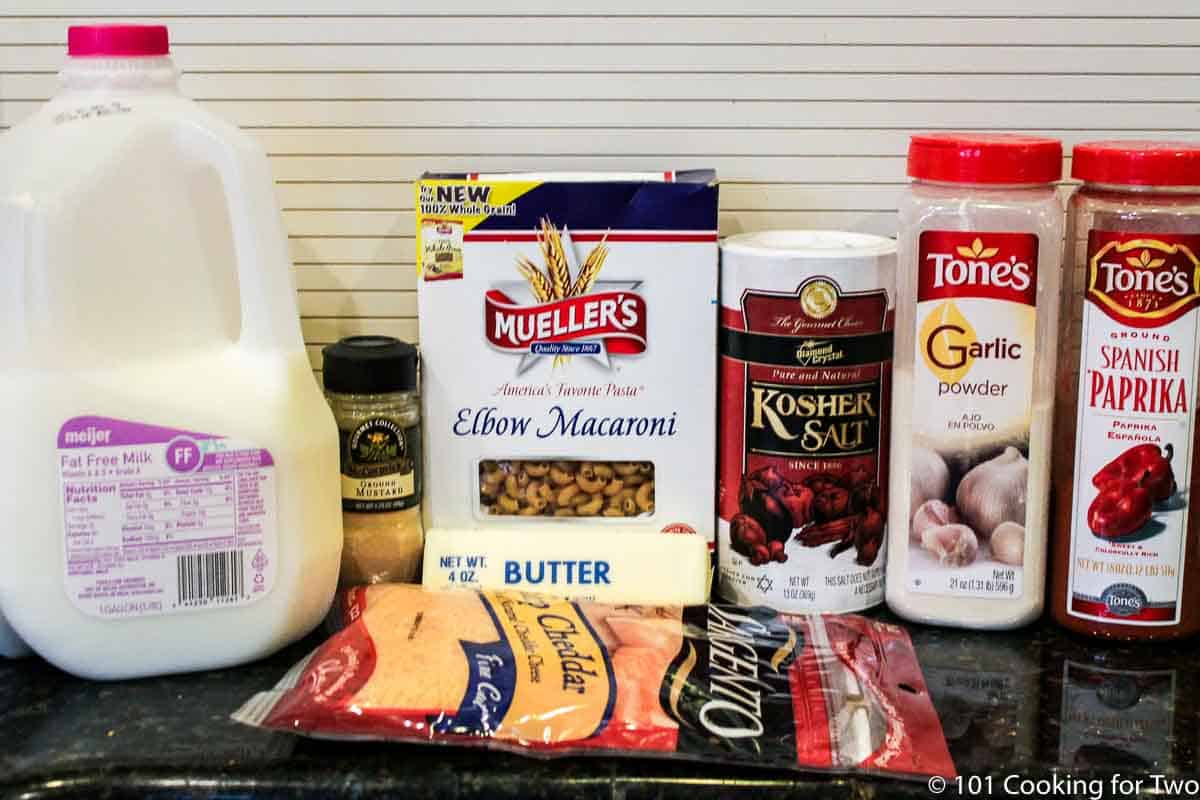
Everyday ingredients you probably already have on hand.
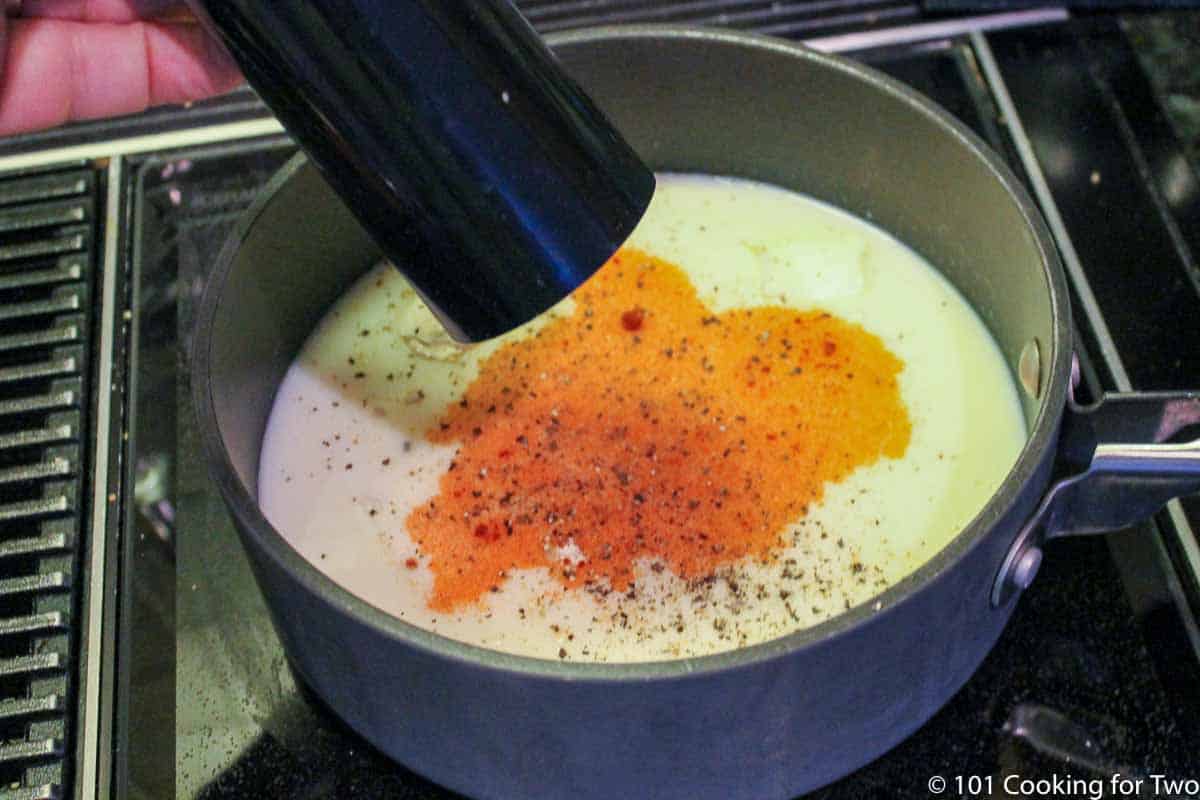
Mix in a medium nonstick saucepan 2 cup milk, 1 tablespoon butter, 1 teaspoon salt, 1 teaspoon garlic powder, ½ teaspoon black pepper, ½ teaspoon paprika, and ½ teaspoon dry mustard. Add 8 ounces (about 2 cups) of elbow macaroni.
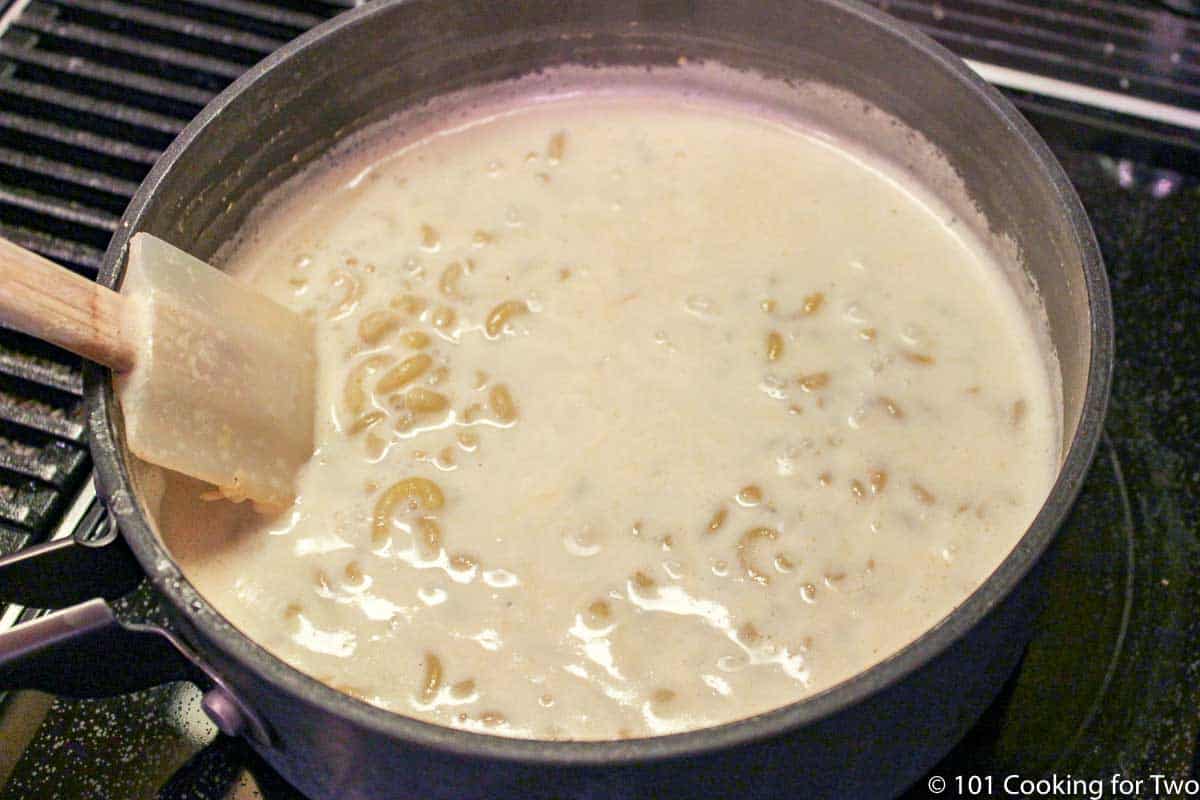
Bring to a light boil over medium-high heat, frequently stirring as soon as it starts to boil. Reduce heat to simmer uncovered. Continue to stir frequently for about 15-20 minutes until most of the milk is absorbed. Check the macaroni for tenderness. If not tender, add ¼ of milk and continue to cook for about 3-5 minutes. You may need to repeat this.
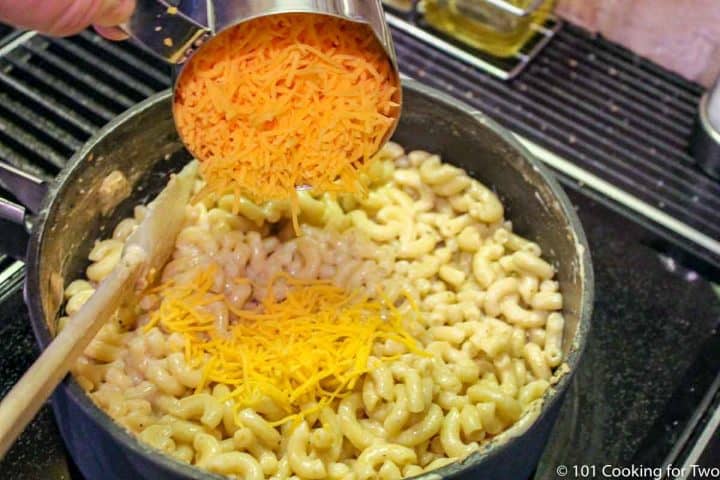
When the pasta is tender, and the milk is mostly absorbed, remove from heat and add 1 cup of shredded mild cheddar cheese.
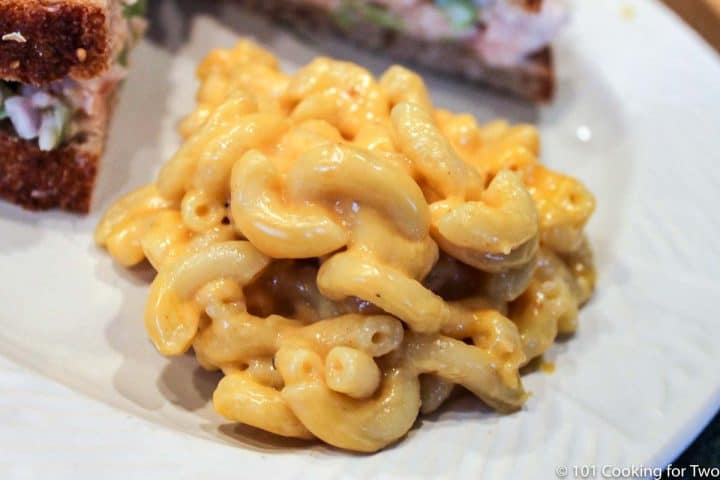
Stir to combine and serve hot.
📖 Recipe
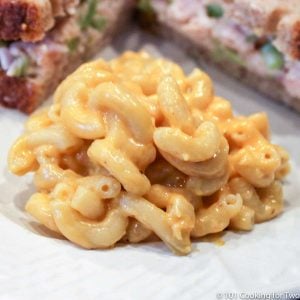
Easy One-Pot Mac and Cheese
Ingredients
- 2 cups pasta
- 2 to 2 ½ cups milk
- 1 tablespoon butter
- 1 teaspoon garlic powder
- ½ teaspoon paprika
- ½ teaspoon dry mustard
- 1 teaspoon salt
- ½ teaspoon black pepper
- 1 cup shredded cheese - usually mild cheddar
Instructions
- Mix in a medium nonstick saucepan 2 cup milk, 1 tablespoon butter, 1 teaspoon salt, 1 teaspoon garlic powder, ½ teaspoon black pepper, ½ teaspoon paprika, and ½ teaspoon dry mustard. Add 8 ounces (about 2 cups) of elbow macaroni.
- Bring to a light boil over medium-high heat, frequently stirring as soon as it starts to boil. Reduce heat to simmer uncovered. Continue to stir frequently for about 15-20 minutes until most of the milk is absorbed. Check the macaroni for tenderness. If not tender, add ¼ of milk and continue to cook for about 3-5 minutes. You may need to repeat this.
- When the pasta is tender, and the milk is mostly absorbed, remove from heat and add 1 cup of shredded mild cheddar cheese.
- Stir to combine and serve hot.
Want to save this recipe for later?
Recipe Notes
Pro Tips
- Most dry pasta should also work except for rapid cooking varieties.
- The end point of cooking the pasta is tender but not overcooked the pasta.
- If there is still significant fluid when the pasta is tender, drain most of it.
- If the pasta is not tender and the fluid is mostly gone, add more milk per the instructions.
- Use the cheese of your choice.
- Options for additions and toppings are discussed in the post.
Your Own Private Notes
To adjust the recipe size:
You may adjust the number of servings in this recipe card under servings. This does the math for the ingredients for you. BUT it does NOT adjust the text of the instructions. So you need to do that yourself.
Nutrition Estimate
© 101 Cooking for Two, LLC. All content and photographs are copyright protected by us or our vendors. While we appreciate your sharing our recipes, please realize copying, pasting, or duplicating full recipes to any social media, website, or electronic/printed media is strictly prohibited and a violation of our copyrights.
Originally Published December 20, 2012. Updated with expanded options, refreshed photos, and a table of contents to help navigation.


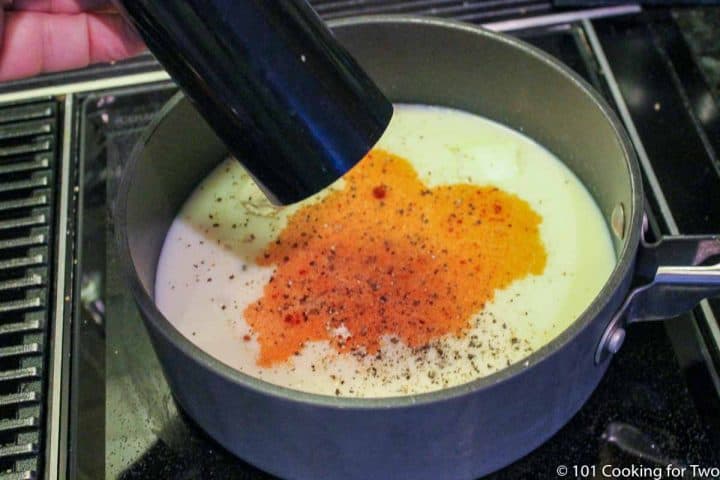
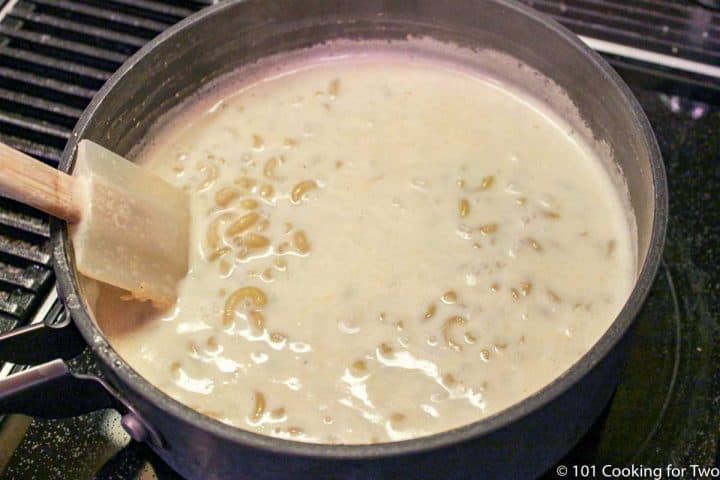
RG
Easy and good. Thanks for sharing this. We added some leftover bbq meat which gave it a little something extra. i might even add spinach next time.
C. Matusiak
In the instruction number 4, and also the recipe steps before the recipe, it says "When the pasta is tender, and the milk mostly absorbed, add 1 cup of cheese (your choice), remove from heat and cover for minutes."
Would that be a few minutes, 10 minutes, or what? I'm one that follows a new recipe exactly the first time around and would like this missing piece of information.
Dan Mikesell AKA DrDan
Hi,
Welcome to the blog.
A "few minutes" here means 2-3 minutes only until completely melted and able to be combined. I'm not cooking the cheese which I find makes it stay creamier.
Hope that helps.Thanks for asking and the rating.
Dan
Charlene
Thank you Dan - it is a very clear response - I agree, it has to be the milk. I am going to try this recipe one more time with regular milk - the picture of it looks so good!
Charlene
Hi Dr. Dan,
I have made this recipe twice now and have been disappointed with the results. I think it is because I am using Lactose Free milk - the mac and cheese tastes like it has sugar in it as a result. I am going to try it one more time with regular milk to see how it goes because usually your recipes are great! Just thought I would pass the info on about Lactose Free milk.
Dan Mikesell AKA DrDan
Hi Charlene,
Sorry it didn't work well but it may be the milk.
A brief doctor discussion. All dairy has sugar called lactose. Lactose is what is called a disaccharide which is two molecules of sugar (glucose and galactose) stuck together. Most people have an enzyme called lactase to break the lactose in half so you can absorb it. If not broken up, it will ferment in the intestine and produce gas and diarrhea. So one molecule of lactose becomes two molecules of other sugars. You body detects the sweetness by number of molecules not weight. So lactose from milk has been pretreated with the emzyme lactase doubling the number of sugar molecules and making it sweeter.
I know, clear as mud but I must have explained it a thousand time to people with lactose intolerance.
So if the problem to your taste is sweetness, it probable is the milk. Otherwise maybe a different recipe.
Dan